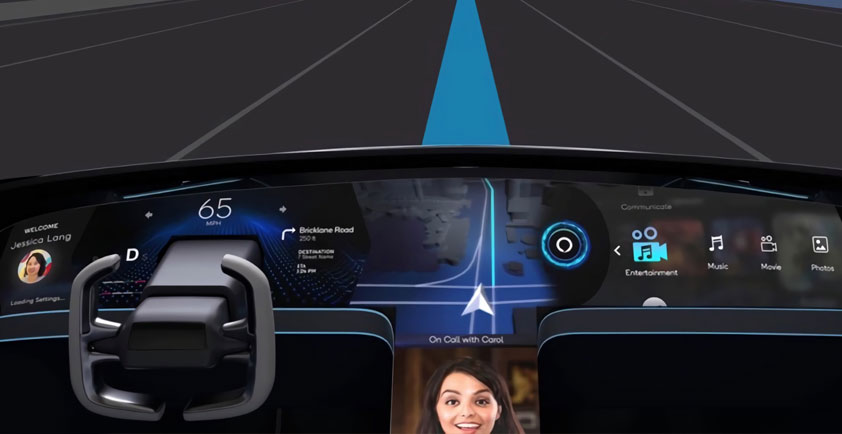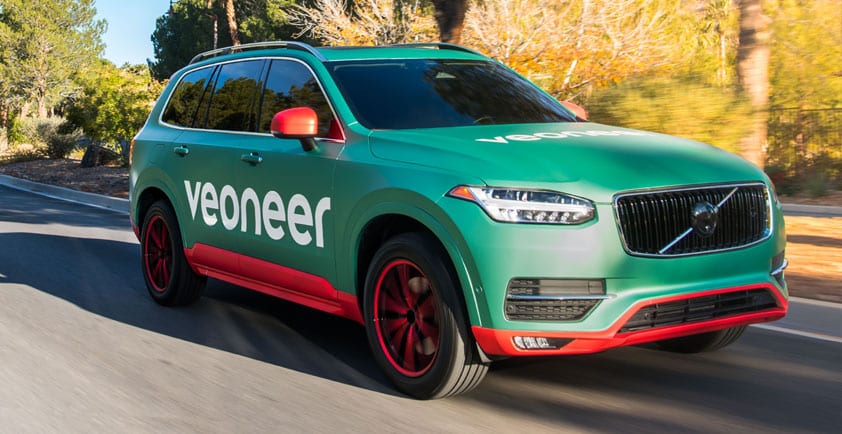

CONSORTIUM OF LEADING AUTOMOTIVE AND TELECOM COMPANIES ANNOUNCE SUCCESSFUL COMPLETION OF CONVEX C-V2X PROJECT
>> Audi, Ericsson, Qualcomm, SWARCO and Technical University of Kaiserslautern Conclude that C-V2X Technology is a Reliable and High-Performing Solution for Cooperative ITS
AUDI AG, Ericsson, Qualcomm Technologies, Inc., SWARCO Traffic Systems GmbH and the University of Kaiserslautern today announced the successful completion of the world’s first-announced C-V2X trial. Initiated in December 2016, the trial utilized a test bed and field tests based on 3rd Generation Partnership Project (3GPP) C-V2X direct and network-based complementary technologies for connected vehicles and Intelligent Transportation Systems (ITS). The tests were designed to provide further evidence of the complementary nature of short-range direct and cellular wide-range communication with C-V2X and received results demonstrating the reliability and performance of the vehicle-to-everything (V2X) technology. The organizations formed the Connected Vehicle-to-Everything (V2X) of Tomorrow (ConVeX) consortium in December 2016, and since have successfully completed and analyzed end-to-end implementation and performance testing in realistic driving conditions.
During the project, ConVeX, which is co-funded by the German Federal Ministry of Transport and Digital Infrastructure (BMVI) with 1,8 million euros in the program “Automated and Connected Driving”, tested and demonstrated several use cases for C-V2X, including Vehicle-to-Vehicle (V2V) and Vehicle-to-Infrastructure (V2I) direct communication operating in the 5.9GHz ITS frequencies, as well as Vehicle-to-Network (V2N) wide area communication. For these tests, Audi vehicles and SWARCO’s intelligent road infrastructure were equipped with C-V2X technology based on the Qualcomm® 9150 C-V2X Platform.
ConVeX investigated the reliability, range and performance of C-V2X direct communication using 5.9 GHz between vehicles and with infrastructure at varying speeds. Testing delivered 100 percent reliable reception of safety messages in line of sight conditions of up to 1.2 km, with the distance limited by the length of the test roads. The test was conducted with relative vehicle speeds between two vehicles traveling in opposite directions of up to 430 km/h. These tests were conducted at two German motorways, at the A9 which contains a testbed initiated by the German Federal Ministry of Transport and Digital Infrastructure (BMVI) and the Free State of Bavaria, and on the A6.
Tests were also conducted in urban conditions with completely “blind” intersections and showed at least 140 m range with safety messages delivered at 100 percent reliability for the V2V communication, which underlines the high effectiveness of C-V2X direct communication over multiple use cases, for example Intersection Movement Assist (IMA), Left Turn Assist (LTA), and Forward Collision Warning (FCW).
In parallel to real world tests, extensive simulations were conducted by the Technical University of Kaiserslautern to corroborate the very good field performance of C-V2X.
V2N testing leveraged an Ericsson network supporting 5G concepts such as network slicing and geo-casting for use cases such as hazardous icy road alert. Thanks to the characteristics of 5G cellular networks, traffic information is consistently delivered with low latency and high reliability over arbitrarily long ranges that are determined by the application needs, rather than by communication capabilities.
During the trial, ConVeX also demonstrated the reliability, range and performance of the communication technology with the world’s first cross-border demonstration for C-V2X direct communication between vehicles and with infrastructure across three Trans-European borders on the testbed made available by the states of Germany, France and Luxembourg since 2017. The detailed project results from this trial, as well as all related documentation can be found at the ConVeX website https://convex-project.de/deliverables.html
“We have already connected the Audi fleet with traffic lights in cities and now we look ahead as C-V2X will dramatically boost road safety and efficiency in our cities. The ConVeX project enabled Audi to test the technology under challenging real-world conditions,” said Jens Kötz, Head of Electrics, Electronics Networking & Energy Systems at Audi. “It is now important to define the interfaces and standards at an early stage – together with relevant stakeholders. This is of crucial importance to obtain an exact coordinate system in order to tailor further assistance systems for connected vehicles.”
“Solutions which are realizing the full potential of connected mobility need cross-industry research collaboration,” explains Jan-Peter Meyer-Kahlen, Head of the Ericsson R&D Center Eurolab. “These solutions will make our roads more convenient and safe in the future.”
“With ConVeX we added Cellular-V2X to our traffic infrastructure portfolio for connected, cooperative and automated driving. C-V2X became a fully accepted building block in our traffic management solutions. It will become a key element in traffic infrastructure communications to make travel safer, quicker, more convenient and environmentally sound,”
says Michael Schuch, Speaker of the Executive Board, SWARCO AG.
“The ConVeX project demonstrated the enormous potential of connected driving in improving the traffic safety and efficiency. It motivates and lays down further steps towards the evolution of V2X technologies to realize the vision of seamless intelligent driving,” said Professor Hans D. Schotten, Technical University of Kaiserslautern.
“Innovation and industry-leading products have helped Qualcomm Technologies become a significant enabler of advanced automotive communication and computational systems. With several products from Qualcomm Technologies already introduced for commercialization, the automotive industry will now be able to have a more comfortable, safer and efficient driving experience. This successful C-V2X project serves as another step in the right direction towards our vision for smart transportation – helping advance the day for fewer accidents, less congestion, and overall greener mobility,” said Enrico Salvatori, senior vice president and president Qualcomm EMEA, Qualcomm Europe, Inc. “With a strong evolution path in 3GPP to 5G V2X, Qualcomm Technologies continues to invest and support the development of the C-V2X roadmap to offer new and supporting capabilities including automated vehicles.”













